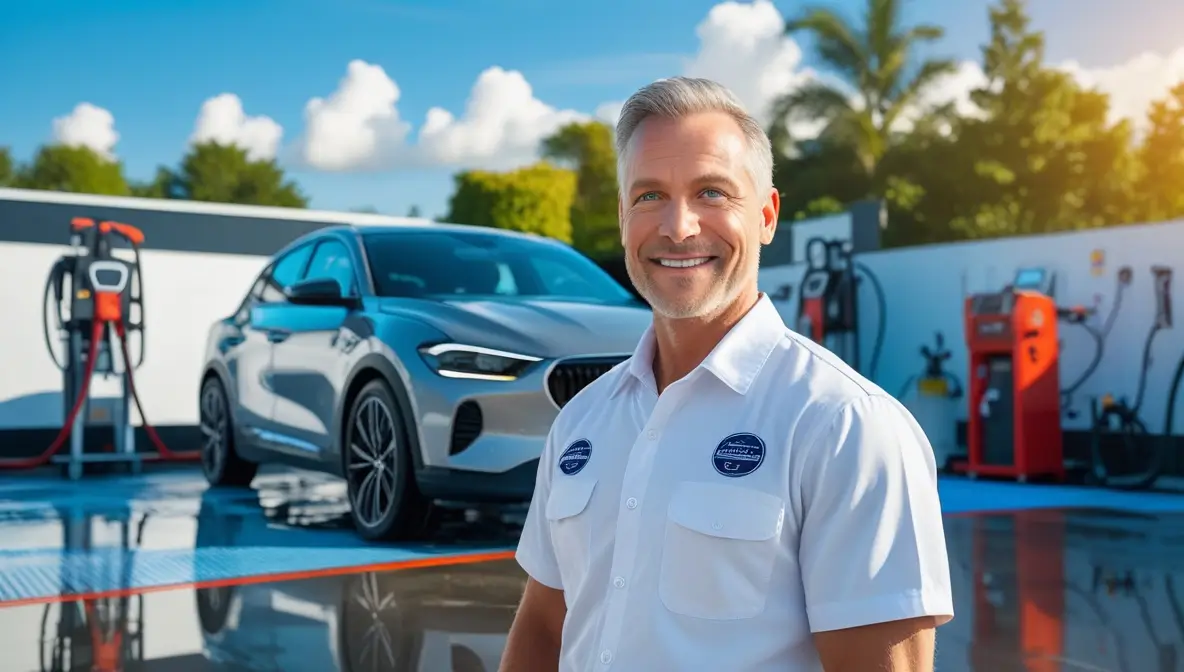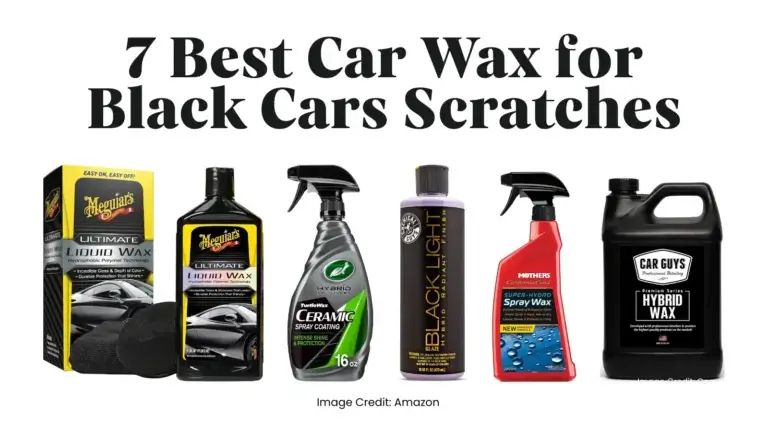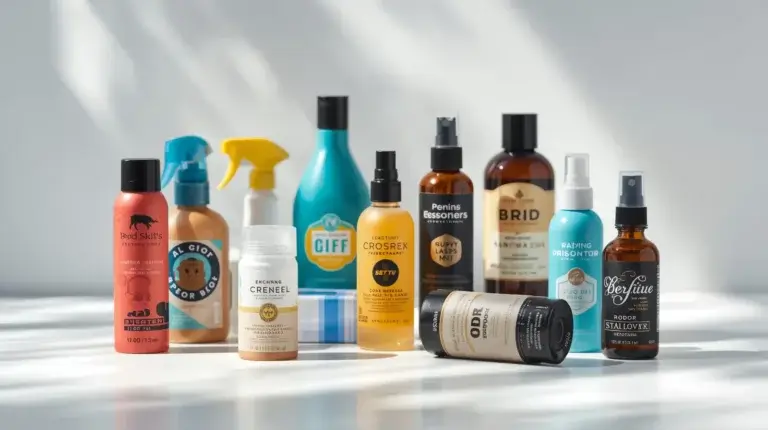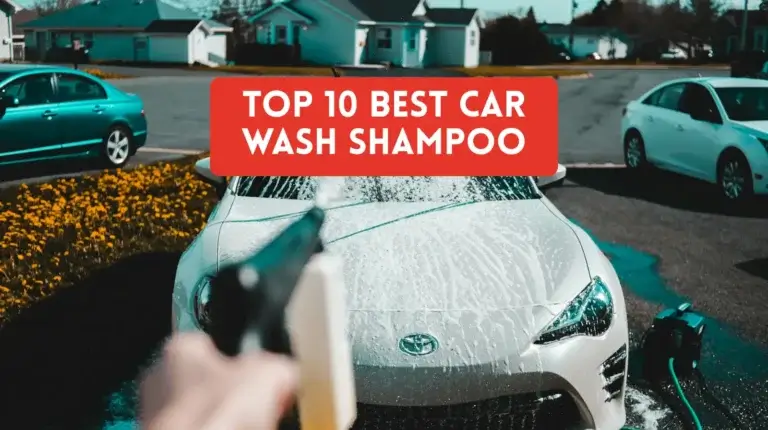Introduction
Protecting your new car, truck or SUV is easy when it’s brand-spanking-new. Sometimes, knowing the right way to wash your vehicle is half of it looking “just off the lot.” However, washing a new car is not just as straightforward as watering it down or riding through any regular vehicle wash. Modern cars have sensitive paint finishes and or coatings that need particular care. Therefore, how are you supposed to wash that shiny new car the better way? Let’s dive in!
Importance of Proper Car Washing for New Cars
Aside from aesthetics, your paint does a lot to protect the body of your car from rust, scratches and damage by harmful UV rays. If you do not wash it properly, your car will sit on the dealer lot with swirl marks or light scratches and even have their protective layer completely removed. Washing a broken in car the right way means your new baby can stay gleaming for years to come!
Common Mistakes in Washing New Cars
Common Mistakes Before The Best Methods
- Household soaps (like dishwashing detergent) that removes wax and harms the paint
- Doing so in the sun to dry = water spots.
- Not rinsing correctly which allows dirt to settle against the surface while washing.
Types of Car Washes

Properly cleaning your new car means comprehensive war and the right process can help to keep it looking great, without causing damage. In this post, we will be breaking down the top 5 types of car washes to give you an in-depth look at each and suggest which one is best for your vehicle.
Hand Washing: The Safest Option
Hand washing is always at the top of anyone advise for what’s the best way to wash a new car ( all modern cars have fragile paint finishes). With this method, you can really ensure that every step is done right and prevent the possibility of wash-induced scratches or swirls (a major issue with automated carwashes) from damaging your paint.
Advantages of Washing By Hand for New Cars
Hand washing is simply stating cleans without a flourish in welcome and gentle touch. This makes it easy to spot and treat issues individually, leaving no square inch of your car unclean. The level of control provided by the Film Prep solution is entirely suited to new cars, and for darker paints in particular or on any car featuring fresh paint or factory-applied coatings where protection and a consistent standard are paramount.
Not only does hand washing provide a thorough clean but it also allows you to use top-of-the-line products specific to your car. You can select materials that actually will help to protect your vehicle’s finish damage—as opposed to causing importance.
Hand Washing Procedure Step by step
So to help, here is a guide on properly hand washing your new car.
Rinse the car thoroughly:
- Start by rinsing away any loose dirt and debris using a hose or pressure washer. When washing the car, keep special focus on areas of the lower half where mud and grime build up.
Prepare a two-bucket system:
- One bucket of soapy water ( pH balanced car wash)
- Fill a separate bucket with fresh water to wash the mitt in after each panel
This method keeps the dirt from returning onto the car and more importantly reduces scratching chances.
Wash in sections:
- Top down is the best cleaning method, since taking advantage of gravity saves time and energy and windows are generally still going to be cleanest.
- Gently work a microfiber mitt in simple straight-line swipes to prevent swirl marks.
Rinse each section:
- After cleaning a section, rinse it off immediately to avoid soap drying on the surface.
Dry with care:
This time, however the vehicle should be dried with a soft microfiber towel or chamois oxide. Don’t allow the car to dry on its own as this will create water spots.
Touchless Car Wash: Modern and Convenient

For anyone in a hurry and is safety conscious for their new car, the touchless wash can serve as an effective solution. Modern method of the cleaning via high-pressure water jets with chemical cleaning solutions that can clean all dirt without any physical contact.
Advantages of Touchless Car Washes for Your New Vehicles
1. No contact is no scratches:
- But because there are no brushes or sponges ever touching the car, swirl marks and scratching is virtually eliminated on even the most delicate paint finishes.
2. Quick and efficient:
- Stay-it a contactless car was intended for convenience It is fast about 2-4 minutes to have your car washed so best for a tight schedule.
3. Safe for custom finishes:
- For car owners with custom paint work, vinyl wraps or a ceramic coating touchless washes can play to their favor.
The down-side is that touchless washes need heavy chemicals to break the dirt loose and do not work as efficiently with a dirty car. Also, if you use these chemicals often enough it may eventually degrade the wax or some sort of protective coating.
When it comes to rapid Yellow Car Removal, automatic car wash is a traditional solution. However, are they good for your new cars? It will differ based on the system.
Risks of Traditional Automatic Car Washes
Traditional car wash systems, pertaining to brush based mechanisms which can cause minute scratches or swirl marks over the paint. These systems are also known for absorbing dirt and debris in their brushes, which could be harmful even to freshly painted/coated cars.
Tips for Using Automatic Car Washes for New Cars
If you choose to use an automatic car wash, keep these tips in mind to minimize risks:
- While an automatic car wash can be great, there are certain measures you must take to ensure a safe process:
- You will need to search for something like brushless or soft-touch.
- The vast majority of modern car washes are built with soft-cloth or foam-based brushes, which allow a more gentle cleaning process.
Waterless Car Wash: Is It Suitable for New Cars?

Waterless car washes are becoming increasingly popular due to their convenience and environmentally friendliness. Waterless car wash solutions are designed for uses with a spray that will clean and polish your automobile without water.
The Ups and Downs to Waterless Car Washes
Pros:
- Environmentally safe: Save gallons of water so you are making it the environmentally friendly way.
- Ideal for Apartment Living and Water Restrictions: Quick & Easy
- Polish — Some waterless car wash options also have polish in them for touchup shine.
Cons:
- Only desks and other light cleaning: Waterless car wash works well with cars that have little dirt in them. Extremely Dirty Vehicles: Effective Way to Wash Your Car at An Automated Drive Thru:- For very dirty vehicles a traditional wash is the best.
- Option for scratches : Avoid process of cleaning spray will simply be fun taking the dirt with it’s down auto-the grooming instead there in micro-quarrelling around.
How Do You Use a Waterless Car Wash?
Waterless Car Washes: These are for if you want something a little faster and easier, or when your car just has light dust on it (or maybe some fingerprints). Never use a dirty microfiber towel and try not to press too hard on the cloth, it can help with scratches.
Optimal Car Wash Supplies for a New Vehicle
And the proper technique is just part of keeping your new car looking as great down the road, so you also need to stick with kind of products and tools described above. When you use quality car wash supplies, it guarantees that not only are you protecting your vehicle finish but also preventing from avoidable damages. The following are the basic cleaning and caring do’s you need to have after washing your vehicle for new.
Read on: Getting the Best Car Wash Soap
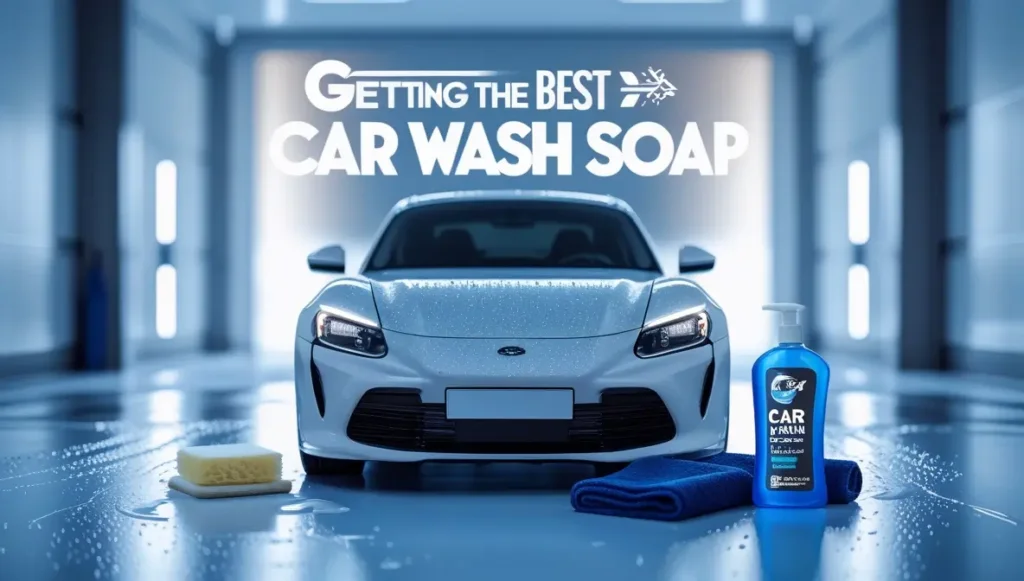
A proper car wash soap is a must have for washing your car and one of the most important products. Some soaps are better than others while some may damage your face even more.
Why It Matters
Household soaps like dishwashing detergent might appear to be a simple choice but they are way too rough on you cars paint. While these soaps may be good at washing away the fats and oils in your sink, when used on a car they will strip any wax off the surface of your paintwork.
What to Look For
- Formula: Look for a pH-balanced car wash soap This will help preserve any wax or sealant layer the vehicle has had and avoid scratching up your paint.
- Effects Foaming Action: High foaming soaps help lift dirt away from the surface, which can reduce scratches.
- Mild Ingredients: use soaps that are made for automotive finishes, they clean dirt without being harsh on the paint.
- It does not matter how clean, dry and shiny you get your car with the best paste wax for cars or even a full detailing if you do one thing: hose it down but use dish soap.
Why Use Microfiber Towels / Mitts
If there is a car coat tool mot to be stingy with then its microfiber. Soft, super-absorbent materials that make a world of difference when it comes to washing and drying your car without inflicting scratches!
Why Microfiber Is Essential
Microfiber towels and mitts are specifically designed to trap dirt, so you have less of a chance that particulate might drag along your car as it is wiped down causing scratches. Because of their soft texture, they make only gentle contact with the paint so as not to disturb even high-quality delicate finishes.
Microfiber Best Practices
- Dedicated Microfiber Towels: Use microfiber towels for each step of the process; washing, rinsing and drying. That way you avoid cross-contamination and also recollect that the dust will not come back on the car.
- Regular Washing: Wash microfiber towels each time you use them, to keep their performance.
- Wash with a Microfiber Mitt: Using the mitt to lather soap and scrub your car surface will give you streaks but in an even layer.
Drying with Microfiber
When drying, grab a nice large microfiber towel or waffle-weave drying towel. They are extremely absorbent and will put your car water free pretty fast, without any spots or streaks. Mineral deposits from water will be left behind, so a thorough drying after is necessary, especially if you’re not rinsing with filtered water.
New Car Protection with Wax and Sealants
You have only taken the initial step to feel good about your car’s appearance. You must wax or apply a paint sealant every time after washing your car to improve and protect the finish of the automobile.
Benefits of Wax and Sealants
- Look and Feel: Your car will look (and even feel) like it just rolled off the dealership lot with a deep glossy finish that enhances your vehicle’s color.
- Protective Layer of UV Rays: One of the essential features wax and sealants have in common is that both serve as a shield from harmful sun rays that can wear down your paint job with time.
- Hydrophobic Properties These items are on the surface water, and make it easier to wash again.
- Keeps Dirt Away: A waxed or sealed surface is smoother, meaning dirt and contaminants such as bird droppings or tree sap are less likely to find a home.
Choosing the Right Product
- Carnauba Wax: Carnauba offers a deep shine but may need to be applied more often.
- Synthetic Sealants: Last longer than wax, and are a very good protection against environmental damages.
- Spray Waxes – Perfect for a quick tune-up, providing some added pop between washes or wax sessions.
How to Apply Wax or Sealants
- Clean surface: Make sure to clean wheels and allow them dry totally before applying.
- Use an Applicator Pad: Apply the product in thin, even layers across small sections of your vehicle. Do one door or panel at a time.
- Buff the product to a Shine- After allowing the product to cure (follow instructions for curing time) use a clean microfiber towel and buff into surface until finish shines.
- Reapply as Necessary: Wax is typically apply re-applied every 6-8 weeks. Sealants are lasting around 6 months and even beyond that.
Best Practices for Washing New Cars
Proper washing is a basic prerequisite for keeping your new car in showroom condition. Proper methods guarantee your automobile will not obtain scratched up, non-slippery along with prevents long-term harm. These are the best practices on how to wash a new car, from preparation through finishing touches.
Best Practices for Washing New Cars
Car Pre-wash Preparation One of the most important factors that come into account when one prepares to wash their car is preparation. Skipping this process can lead to scratches and inadequate cleaning.
Why Pre-Washing Is Important
What pre-washing should achieve is eliminate most of the dirt, dust and debris from all over your car before you begin the scrubbing action. By doing so you drastically reduce the chance of dirt particles being pushed around in the paint causing minuscule scratches and swirls.
How to Pre-Wash Your Car
- Wash the Entire Car: Rinse Your Way To a New (er)car-Thanks to Clean, Shine Polishing Services at HORLOR AUTO SUPPLY Top Down — start at the top and work your way down, to allow mud/dirt/debris be washed off. The wheels will see a substantial amount of grime so you’ll want to focus on these items as well along with the lower panels.
- They foam up easily, use half the amount of soap with a foam cannon or garage pressure washer system. This will break up hard dirt and improve lubricity, which makes the main wash safer for your paint.
- Check the Surface: After rinsing, look for any stubborn spots such as bird droppings or sap. This be fixed by using a specialty cleaner or clay bar in the wash.
Some extra minutes spent on pre-wash preparation can save you a lot of stress when it comes to scrubbing out scratches and paint damage.
Avoid Scratches When Washing
Cleaning the Exterior When your car is prepared to be washed, it just comes down to some basic tools and techniques. The finish of your car is so delicate that even a tiny mistake like scrubbing too hard or not wiping well can show up on the paint as scratch marks.
Top Washing Techniques
Wash from Top to Bottom:
- This will begin your washing and it should be performed top to bottom length.
- The top is kept clean but the bottom gets beat up, muddy and a little grimy. Work from the top down so that dirt falls onto cleaner sections, instead of spreading it to other places.
Use Straight-Line Motions:
- Never use a circular scrubbing motion because this can lead to swirl marks, which are very visible on dark paint. That said, use your common sense — skip the circular motion when soaping up with a mitt or sponge.
Use a Two-Bucket System:
- In one bucket should be soapy water; in the other, clean water (for rinsing your wash mitt or sponge)
- It helps prevent dirt from being reintroduced to your car and lowers the potential for scratches.
Gentle Pressure Only:
- Do not rub too tightly when washing. Allowing the soap and water to work their way through dirt
Focus on Sections:
- In other words, start washing just one part of your car (such as the roof or a door), and rinse it completely before moving on to the next. It also stops the soap from drying on the surface, which can cause streaking or buildup.
Tools for a Scratch-Free Wash
- Microfiber Wash Mitts; they have long thread that catches dirt in the fabric instead of on the surface, keeping it from scratching your paint.
- Avoid any transfer of brake dust or road grime on to the car’s body by using different n tools for wheels and tires. Soft Brushes for Wheels
Following those hacks, your car finish will be smooth shiny and free from ugly marks.
Rinsing and Drying Tips
Rinsing and drying correctly after washing are just as important on the way to a shiny car in the desired end of everything. Not paying proper attention to these will result in soap residue, streaks or water spots that reduce the gloss of your car.
Rinsing Your Car Thoroughly
- Rinse the Entire Car Once Again over SOLUTIONS .Remember rinsing everything from window glass to rims {all part of this step}.
- As When Washing, Start from Top to Bottom: This way when you are rinsing the dirtiest water flows away into already cleaned areas.
- Ensure No Soap is Left Behind: Examine side mirrors, door handles and crevices to ensure no soap remains.
Drying to Prevent Water Spots
While it might be easier to let your car air dry, water spots are often left because of minerals occurring in the water. This can be avoided, by drying using these few tips below;
Use a Microfiber Drying Towel:
- Choose a large, absorbent microfiber towell that will help you dry your car quickly and not leave smudges.
- Pat the surface lightly instead of rubbing it, so you prevent scratches.
Try an Air Blower:
- For grilles, side mirrors or even the wheels — areas where a conventional microfiber towel can barely grasp— utilize either a handheld air blower (often sold for home use) or better yet…a civilization saving leaf-blower. In this way, it avoids water gathering in the smallest areas.
Some of the things that a microfiber waffle towel is ideal for include: Great windows and/or water & cleaner absorption requirements.
Drying Glass:
- Dry with a second waffle-weave towel. This way you get sparkling clean windows, without streaks.
Work Quickly:
- When you are done, dry it straight away to prevent water spots.
Final Touches
Once dry, do a quick spot check for any areas you may have missed. When required, use a quick detailer spray and a fresh microfiber cloth to bring the finish back up.
Maintaining the Shine of a New Car
How often should a new car be washed?
So to keep your car looking good and in the best shape, get it washed once or twice a week: This will help you maintain that shine and protect its color.
Ceramic Coatings to Protect Paint
But for that extra layer of protection over the long-term, then a ceramic coating is as good an option as any. It does form a sturdy coating that protects your car from dirt, UV rays and minor abrasions.
What Damages to Avoid After Wash
- Use Phenolic Hand Brush, Do not Use Metal Brushes or Cloth/Fiber Mesh.
- Do not wash the car under direct sunlight to avoid soaps spots.
Conclusion
How to wash a new car — it is an art form that takes the right tools, technique and most importantly loving care. Hand washing by far is the best, but for you fellas on the go touchless or tap automatic options are just awesome alternatives. Follow these tips and your car will look just as stunning on the day you drove it home.
FAQs
1. How Often Should I Wash My New Car?
The ideal frequency would be either every week or two weeks, depending on how often you use your vehicle and the road conditions/weather where you live.
2. Is It safe to use household soap on my car?
Household soaps—no, household soaps will strip wax and harm its color. Wash with pH-Balanced Car Wash Soap
3. An auto car wash for brand new cars?
Definitely, but opt for soft-touch or brushless car washes to reduce harm.
4. What is The Best Way to Dry a Car Without Water Spots?
Dry the lights using a microfiber towel or an air blower for streak-free shine.
5. How often do I need to wax my new car after a wash?
You don’t need to use wax too frequently after every washout; you can actually apply it a few times per year (quarterly) just to keep that car paint protected.

